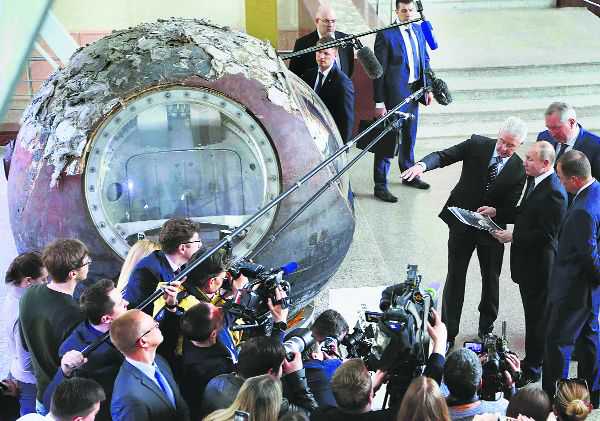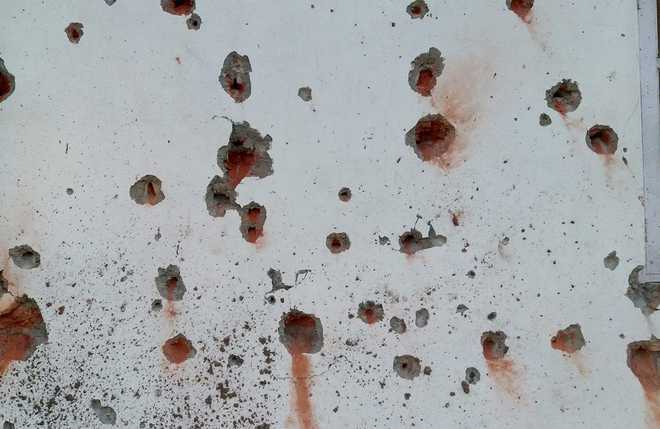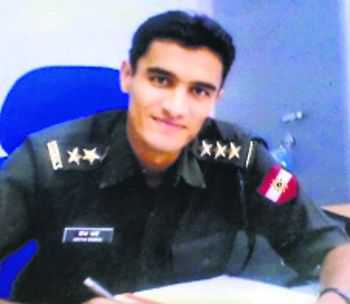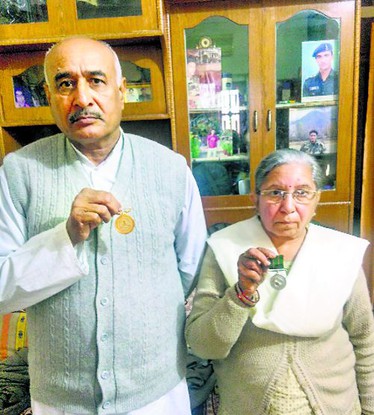
Mission space: Russia can build a lone lunar station, but funds are a challenge.
MK Bhadrakumar
Former Ambassador
Us space agency NASA has abruptly called off a planned visit to the US in February by the head of the Russian state space corporation, Roscosmos Dmitry Rogozin. NASA made the announcement on January 4 following criticism by the US media and lawmakers who demanded cancellation of the visit. The snub to Moscow presages sudden death of the historic Russian-American collaboration in exploring the ‘last frontier’ for mankind. It becomes an inflection point.
Rogozin is a close political associate of President Vladimir Putin. He has been subjected to the Western sanctions over Moscow’s annexation of Ukraine’s Crimean Peninsula in 2014. US Senator Jeanne Shaheen, who is a leading critic of Russia’s alleged meddling in the 2016 US presidential election, threatened that the Congress will be ‘forced to act’ unless NASA withdrew the invitation to Rogozin. Shaheen called Rogozin ‘one of the leading architects of the Kremlin’s campaign of aggression towards its neighbours’ and said the invitation ‘undercuts our message and undermines the US’ core national security objectives’.
The big question is whether the curtain is coming down on the space cooperation between the US and Russia. It is a poignant moment since the two countries have had a long history of working together in space ever since the joint Apollo-Soyuz mission in 1975, and more so, in the past two decades. Within the ambit of cooperation, the two countries have shared training, communications, operational capabilities and expenses in support of the International Space Station (ISS). In particular, following the cancellation of the US Space Shuttle Program in 2011, the US began relying on Russia’s Soyuz capsules for transport to the ISS. Russia receives an average of $81 million per seat on the Soyuz. In a joint statement in 2017, the two countries even projected the idea of collaborating on deep space exploration, including the construction of the Lunar Orbital Platform-Gateway, a research-focused space station orbiting the moon. (Rogozin’s visit aimed at fleshing out the tantalising idea.) Both countries saw clear benefits, given the high price tag for solo space exploration.
However, times have changed. Russia and the US are flaunting today their capability to destroy each other in a thermonuclear war, something unheard of even at the height of the Cold War. Space has become a new domain of warfare. If the 2018 US National Defense Strategy characterised ‘space and cyberspace as war-fighting domains’, Russia’s 2010 military doctrine explicitly stated that ensuring superiority in space would be a ‘decisive factor’ in achieving its strategic goals. In this tense security environment, the need arises to protect space assets (satellites, etc.) with space-based weapons. Suffice to say, the scope for sharing sensitive technology or capabilities in space partnerships has dramatically shrunk due to the growing hostility between the US and Russia.
Secondly, a private sector space industry has appeared in the US and it has spawned commercial interests. The development of advanced technologies by private companies means NASA has new options to choose from and to reduce the dependence on Russia. In fact, NASA is already in a position to use Boeing and SpaceX capsules for human spaceflight beginning in 2020 and even has the option to phase out the procurement of Russian RD-180 rocket engines by 2022. With President Trump ordering the establishment of a sixth branch of the military (‘Space Force’), the dominant aerospace companies in the US — Boeing, Lockheed Martin, Northrop Grumman, Raytheon and BAE Systems — are eyeing the new frontier.
Russia’s preference has always been to press on with a space programme entwined with the US’s. But in a scenario where NASA turns its back on Roscosmos, Russia may have to turn to China or India for partnership. Recently, Rogozin openly hinted at this. In his words, ‘China is offering many initiatives for cooperation, is asking us to help them develop, though they have already achieved a good level of development. They are suggesting creating a joint station.’ Rogozin even floated the idea of a ‘BRICS station’. Of course, Russia is technologically capable of building a lone Russian lunar station. But then, as the director of the Institute of Space Policy in Moscow, Ivan M Moiseyev, told the New York Times recently, ‘The technical capability exists, but the finances don’t.’
Quite obviously, considering that space efforts are inextricably connected to military plans, Russia needs to take a leap of faith to form an alliance with China. On the one hand, the scientific space-related endeavours have immense commercial potentials, while on the other, they signify the ultimate ‘eye in the sky’ through a combination of satellites and unmanned aerial reconnaissance vehicles that would give unmatched insight into positions of enemies (as well as allies). They will phenomenally improve military logistics, facilitate ‘orbital strikes’ at enemy targets as well as open up new lucrative trade and travel routes.
India is far better placed than China can ever be to align with Russia’s space programme, as there are no contradictions in the relations between the two countries. China is a competitor for Russia — as much as for the US — in space. Commenting on the recent landing of a Chinese scientific probe on the far side of the moon, Mary Dejevsky at the Guardian newspaper, a veteran Russia hand, wrote, ‘The response in political and military quarters in Washington, as in Moscow… is likely to reflect trepidation.’ It cannot be otherwise in New Delhi also. All factors taken into consideration, therefore, a tapering off in the NASA-Roscosmos cooperation, which is on cards in a near-term scenario, can be to India’s advantage. Delhi should seize the opportunity.














































































